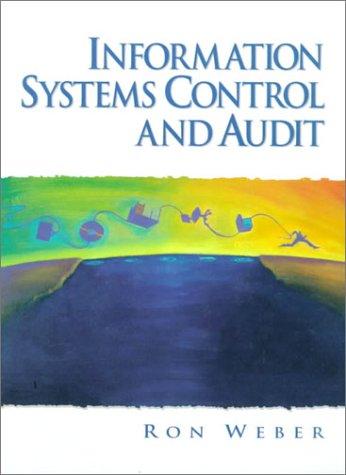You are the manager of internal audit for a large Australian city council. The council is responsible
Question:
You are the manager of internal audit for a large Australian city council. The council is responsible for all the normal services-for example, water, sewerage, roads, waste disposal, parklands, and animal licensing. By world standards, the council's operations are extensive, and its annual budget is large.
One day you are approached by the mayor. He wishes to discuss the responses that the council has received to a tender document which it issued three months ago. The tender relates to the provision of and installation of an extensive series of sewerage and water pipes that are to be located in several new suburbs that the council wants to open up for development.
A large number of replies to the tender were received from companies all around the world. By far, the cheapest tender, however, was received from a joint venture company that calls itself Virtual Pipelines. The mayor is concerned about the nature of the tender. He explains that in essence Virtual Pipelines (VP) comprises nine companies. Company A has taken responsibility for preparing the final tender document. It is also slated to manage the overall provision of and installation of the pipes and related components (e.g., valves). It has contracted with Company B, however, which has a design for the pipes and related components required for the project. The design requires certain modifications, however, to meet the needs of the council. Company A has contracted with Company C, therefore, which is a specialist in design modifications for sewerage and water pipes and their related components. Company \(\mathrm{C}\) has in turn contracted with Company \(\mathrm{D}\) to undertake an engineering analysis of the modified design and to prepare manufacturing plans on the basis of the design. Company \(\mathrm{C}\) has also contracted with Company E to convert the files created by its computer-aided design package into the format used by Company D's computer-aided design package. Company A has also contracted with Company \(\mathrm{F}\) to undertake the actual fabrication of the pipes and their related components. Company F has contracted with Company G, however, to undertake certain die-making and casting. Company A has also contracted with Company H to provide a set of standard documentation for all aspects of the project. Finally, Company A has contracted with Company I to provide archiving and backup services for all documentation and computer files.
When the council first received VP's tender document, most members of the tender evaluation team quickly dismissed it because of VP's "outlandish" governance structure. One member of the team argued the proposal was "outstanding," however, from an engineering viewpoint. She also argued that no other tenders would beat VP's price. On the latter point, she was right. After the first-pass evaluation of the large number of tender documents received, VP's price was significantly below the next lowest. As a result, the tender evaluation team looked at VP's tender document more closely. They concluded that it was indeed the best proposal from an engineering viewpoint—one that would probably set a standard for future work.
Because the council had had no experience with any of the companies involved in VP's tender, however, several members of the tender evaluation team sought out background information on the companies. Some were old, well-established companies; others were new, high-technology companies. They were located all over the world. Surprisingly, none had worked with any of the others before they came together to prepare the tender document. Company A, which was one of the new, high-technology companies, had clearly been the driving force, however, behind the ethos that had arisen with the consortium. It had searched the Internet extensively to find the companies with which it wanted to contract. In turn, it had encouraged and assisted its partners to find other partners in the same way. Indeed, in the preparation of VP's tender document, little face-toface interaction had occurred among employees in the different companies in the joint venture. Most work had been done electronically across the Internet.
Required: The tender evaluation team have now advised the council that they should accept VP's tender. During discussions in council, however, a number of councilors have expressed major reservations about VP's viability as an organization. In this light, the council has instructed the mayor to seek your advice and opinion on how the council should now proceed. In particular, because the work associated with the tender will have to be carried out over a four-year period, they value your opinion on any control and audit issues that you perceive to be associated with the project.
Step by Step Answer:






